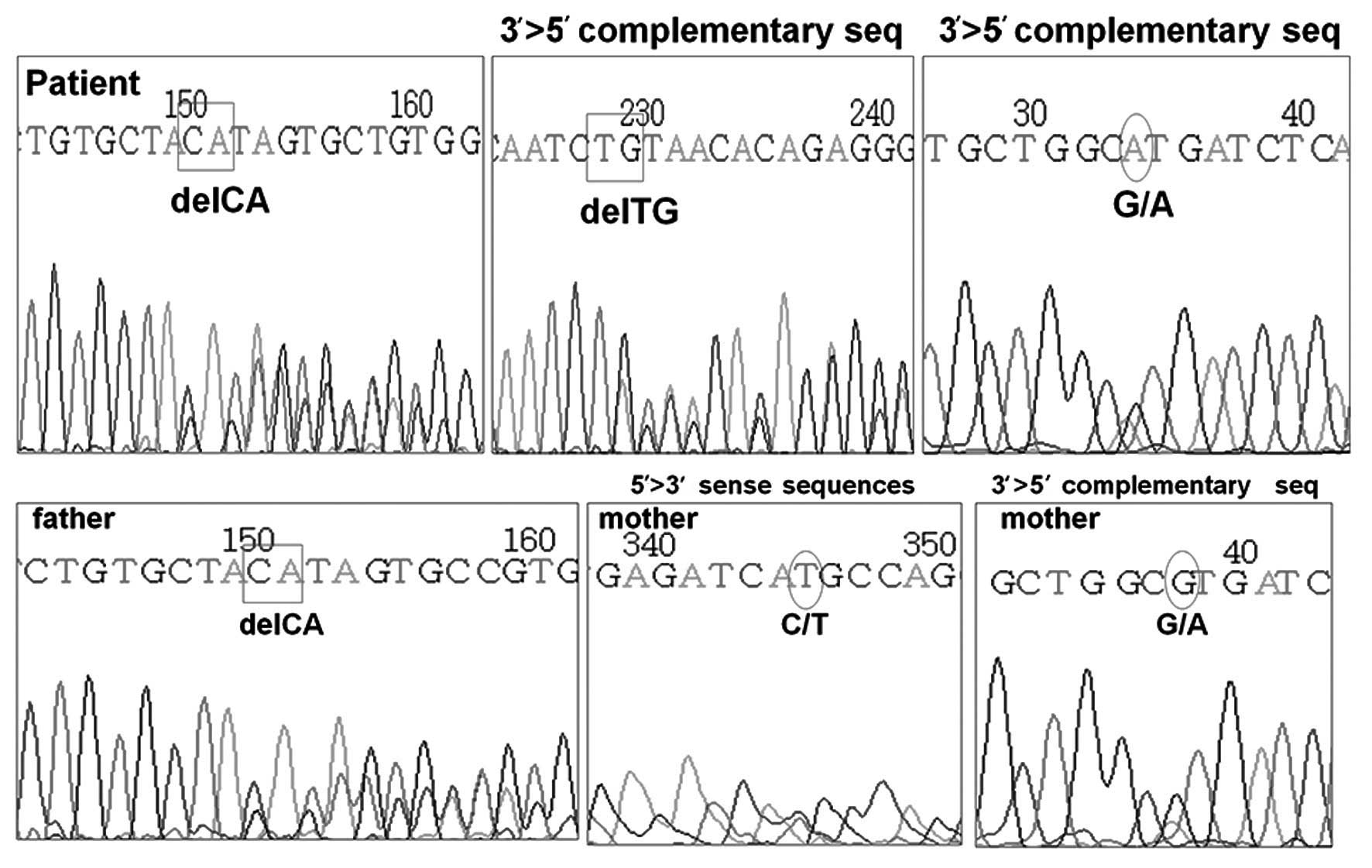Congenital nephrogenic diabetes insipidus with a novel mutation in the aquaporin 2 gene
- Authors:
- Published online on: May 19, 2014 https://doi.org/10.3892/br.2014.283
- Pages: 596-598
Metrics:
Total
Views: 0 (Spandidos Publications: | PMC Statistics:
)
Total PDF Downloads: 0 (Spandidos Publications: | PMC Statistics:
)
Abstract
Congenital nephrogenic diabetes insipidus (CNDI) is a rare disorder caused by mutations of the arginine vasopressin (AVP) V2 receptor or aquaporin 2 (AQP2) genes. The current study presented the case of CNDI in a 1?month?old male with a novel mutation in the AQP2 gene. The patient was referred due to the occurrence of hypernatremia and mild?intermittent fever since birth. An AVP stimulation test was compatible with CNDI as there was no significant response to desmopressin. Molecular genetic analysis demonstrated two mutations in exon 1 of the AQP2 gene: C to T transition, which resulted in a missense mutation of 108Thr (ACG) to Met (ATG); and a 127, 128 delCA, which resulted in a deletion mutation of glutamine in position 43 at codon CAG as the first affected amino acid, with the new reading frame endign in a termination codon at position 62. The molecular genetic analysis of the parents showed that the missense mutation was inherited maternally and the deletion mutation was inherited paternally. The parents showed no signs or symptoms of CNDI, indicating autosomal recessive inheritance. The 108Thr (ACG) to Met (ATG) mutation was confirmed as a novel mutation. Therefore, the molecular identification of the AQP2 gene has clinical significance, as early recognition of CNDI in infants that show only non?specific symptoms, can be facilitated. Thus, repeated episodes of dehydration, which may cause physical and mental retardation can be avoided.










